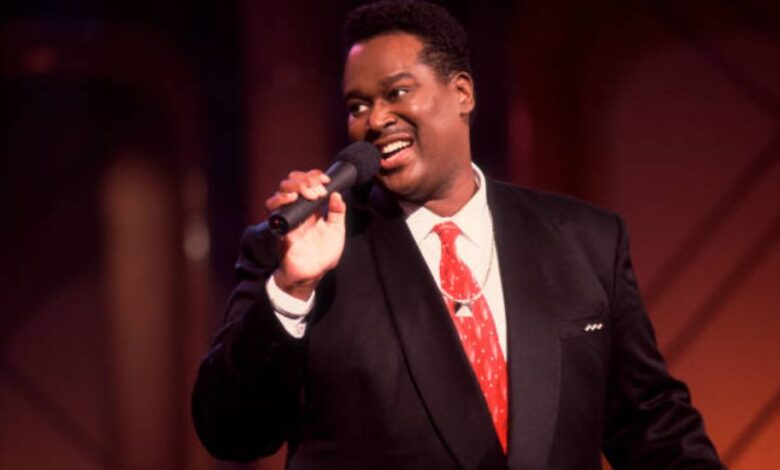Why Luther Vandross A House Is Not a Home Still Moves Hearts Today
Why Luther Vandross A House Is Not a Home Still Moves Hearts Today

In the history of R&B and soul music, few voices have resonated as deeply as Luther Vandross. Known for his silky smooth tenor and unmatched ability to translate raw emotion into song, Vandross became a household name in the 1980s and 1990s. Among his many unforgettable performances, one song stands out as a defining moment in his career — “A House Is Not a Home.”
Originally penned by the legendary songwriting duo Burt Bacharach and Hal David for Dionne Warwick in 1964, the song was reborn in 1981 when Vandross recorded it for his debut solo album, Never Too Much. Luther transformed the track into a sweeping, seven‑minute emotional journey, turning it into one of the most celebrated R&B ballads of all time.
Biography of Luther Vandross
Early Life and Childhood
Luther Ronzoni Vandross Jr. was born on April 20, 1951, in New York City, the youngest of four children in a close‑knit family. His parents were Mary Ida Vandross, a nurse, and Luther Vandross Sr., a singer who passed away when Luther was just eight years old. This early loss shaped his sensitivity and emotional connection to music.
Raised in the Bronx, Luther was surrounded by music from an early age. The family home was filled with gospel, doo‑wop, and soul records that inspired his love for singing. Even as a child, he would mimic his musical heroes and perform for relatives.
Biography & Song Overview
| Category | Details |
|---|---|
| Birth Name | Luther Ronzoni Vandross Jr. |
| Born | April 20, 1951 – New York City, U.S. |
| Died | July 1, 2005 |
| Genres | R&B, Soul, Pop |
| Debut Solo Album | Never Too Much (1981) |
| Notable Song | “A House Is Not a Home” |
| Grammys | 8 wins |
| Sales | 35+ million records |
| Siblings | Charles Anthony Vandross, Ann D. Vandross, Patricia Vandross |
| Songwriters (Original) | Burt Bacharach & Hal David |
| Original Artist | Dionne Warwick (1964) |
Family and Relationships
Siblings
Luther grew up with three older siblings:
- Charles Anthony Vandross – His older brother, who shared Luther’s passion for music and encouraged his artistic pursuits. Charles was a supportive presence throughout Luther’s early life, offering guidance and pride in his younger brother’s achievements.
- Ann D. Vandross – His sister, who maintained a close relationship with him and was part of his support network during his career.
- Patricia Vandross – Another sister who contributed to the warmth and love of their family unit.
The Vandross siblings were raised by their mother after their father’s death, and the bond between them remained strong. Luther often expressed gratitude for his family’s unwavering support.
Private Romantic Life
Luther never married and kept his romantic relationships strictly private. His decision to guard his personal life allowed him to focus on his music and maintain an air of mystery about his love life. Friends and colleagues described him as warm, kind‑hearted, and deeply devoted to those he trusted.of the most celebrated R&B ballads of all time.
Musical Influences and Career Beginnings
Luther’s passion for music blossomed in his teenage years. Influenced by Dionne Warwick, Aretha Franklin, Stevie Wonder, and the Motown sound, he began performing with vocal groups during high school. He attended Western Michigan University but left to pursue music full‑time.
In the 1970s, Vandross gained industry recognition as a background vocalist for artists such as David Bowie, Roberta Flack, Chaka Khan, and Bette Midler. He also contributed to Bowie’s Young Americans album, helping to shape its soulful tone.
Breakthrough as a Songwriter and Vocalist
Before his solo fame, Vandross was active in the group Change, contributing vocals to their hit “The Glow of Love” in 1980. This exposure laid the foundation for his solo debut, Never Too Much, released in August 1981.
Professional Achievements
Grammy Awards and Industry Recognition
Over his career, Vandross earned eight Grammy Awards, including four in 2004 for his final album released during his lifetime, Dance with My Father. He sold more than 35 million records worldwide and influenced generations of vocalists.
Collaborations and Career Highlights
Luther worked with a vast array of stars, including Mariah Carey, Whitney Houston, Beyoncé, and Janet Jackson. His collaborations often resulted in timeless ballads that showcased his unmatched vocal phrasing.
Signature Style
Luther’s music was defined by:
- Smooth, soulful vocal delivery
- Impeccable phrasing and breath control
- Lush arrangements with romantic and heartfelt lyrics
Personal Life
Luther Vandross was intensely private. He never married and kept his romantic life away from the public eye. His life revolved around music, family, and close friends. Known for his generosity and charm, he was beloved by peers and fans alike.
In 2003, Vandross suffered a severe stroke that left him partially paralyzed and unable to perform. He passed away on July 1, 2005, at the age of 54, leaving behind a remarkable legacy.
Origins of “A House Is Not a Home”
The song “A House Is Not a Home” was originally written for the 1964 film of the same name, a biographical drama about a New York madam. Burt Bacharach and Hal David crafted the song for Dionne Warwick, who recorded it with elegance and subtlety.
While Warwick’s version became a classic in its own right, it was Luther Vandross who transformed it into a modern R&B masterpiece nearly two decades later.
Luther Vandross’s Version
Why He Recorded It
When Luther set out to record his debut album Never Too Much in 1981, he wanted to include a song that paid homage to his musical inspirations. His choice to cover “A House Is Not a Home” was both a tribute to Dionne Warwick and a chance to reinterpret the song with deeper emotional resonance.
Musical Arrangement
Luther slowed the tempo significantly, extending the song to over seven minutes. His arrangement featured:
- Soft piano introduction
- Warm, sustained strings
- Delicate drum rim-shots
- Gradual emotional build leading to a soaring climax
Vocal Performance
Luther’s interpretation is often described as achingly beautiful. He stretches each phrase, adding pauses that heighten the tension and emotion. His phrasing on lines like “A chair is still a chair” is tender, yet devastating.
Live Performances
One of Luther’s most celebrated performances of the song occurred at the 1988 NAACP Image Awards, where Dionne Warwick was in the audience. As Vandross poured his heart into the performance, Warwick was visibly moved to tears. She later called it “one of the most breathtaking moments” she had ever experienced as a singer.
Reception and Impact
Chart and Sales Success
While not released as a major single, Luther’s version helped propel Never Too Much to #1 on the R&B Albums chart and #19 on the Billboard 200. The album earned double-platinum certification from the RIAA.
Critical Acclaim
Critics hailed the track as a masterclass in vocal interpretation, with Rolling Stone noting its influence on modern R&B balladry.
Influence on Future Artists
The song’s outro inspired Kanye West’s 2004 hit “Slow Jamz,” which sampled Luther’s performance.
Lyrics and Thematic Analysis
The song’s lyrics explore the difference between a house and a home — a physical space versus a place filled with love. Vandross deepens the emotional weight of the song, making it about longing, loneliness, and the absence of love.
Awards & Cultural Recognition
While Luther didn’t win a specific award for “A House Is Not a Home,” the song became an enduring part of his live setlist and is widely regarded as one of the finest R&B performances in history.
Legacy of the Song
More than four decades after its release, Luther’s rendition remains a staple of quiet storm and R&B playlists. It has been covered by numerous artists but rarely equaled in emotional impact.
Conclusion
Luther Vandross A House Is Not a Home is more than just a cover — it is a masterclass in vocal artistry and emotional storytelling. By slowing the tempo, enhancing the arrangement, and delivering a performance filled with longing and tenderness, Vandross transformed the song into an R&B landmark.
It stands as a testament to his ability to turn any song into a deeply personal statement, cementing his place among the greatest vocalists of all time. Even years after his passing, Luther’s voice continues to resonate, and “A House Is Not a Home” remains a shining jewel in the crown of soul music.



